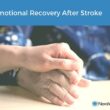Daily Living Activities After Stroke
Getting Back on Your Feet: Getting Comfortable With Daily Tasks After a Stroke (Dressing, Bathing, and Using the Toilet)
One of the main causes of impairment is stroke, which affects a survivor’s capacity to carry out activities of daily living (ADLs), or routine duties. Essential ADLs that have a major impact on independence and quality of life include dressing, bathing, and using the restroom. This blog post examines the difficulties that ADLs may present for stroke survivors and provides tips for getting back on their feet.
Table of Contents

Why Are ADLs Affected by Stroke?
Daily Living Activities After Stroke
When the brain and muscles are unable to communicate with one other, a stroke can cause:
- Muscle weakness: Difficulty starting or finishing tasks that are necessary for using the restroom, clothing, or bathing.
- Impaired coordination: Having trouble coordinating and sequencing the many stages needed in an ADL is known as impaired coordination.
- Balance issues: heightened chance of falls, making activities risky, such as standing to put on clothes or use the restroom.
- Sensory loss: Impairs safe bathing because of decreased awareness of body posture and incapacity to sense temperature changes.
- Cognitive limitations: include trouble organizing and starting tasks, as well as memory issues that affect the order in which steps are performed.
Daily Living Activities After Stroke
These disabilities may lead to annoyance and a reliance on caretakers. However, stroke patients can significantly regain control over their ADLs with the correct support and rehabilitation techniques.
Typical Difficulties with Certain ADLs Dressing:
Daily Living Activities After Stroke
- Having trouble putting on clothes because to arm or leg weakness.
- incapacity to operate closures, zippers, or buttons.
- poor coordination when doing simple things like tying shoelaces.
- Neglecting one side of the body: Not clothing the afflicted side.
Showering:
- difficulty entering and exiting the shower or bathtub.
- keeping your equilibrium whilst cleaning.
- weakness or restricted movement that prevents one from reaching every part of the body.
- Having trouble keeping track of toiletries like shampoo or soap.
Using the restroom:
- securely getting on and off the toilet seat.
- Keeping your equilibrium when using the restroom.
- improper wiping because of frailty or lack of coordination.
- Organizing clothes when using the restroom.
Techniques for Regaining Self-sufficiency in Occupational Therapy ADLs:
Daily Living Activities After Stroke
Occupational therapists (OTs), a pillar of rehabilitation, evaluate each patient’s needs and create customized programs to enhance ADL abilities. Some possible strategies are as follows:
- Adaptive clothing: easier-to-manage items with elastic waistbands or velcro fastenings.
- Exercises for strengthening: To enhance muscle coordination and strength for grooming and bathing.
- Balance training: Techniques to improve stability for secure toileting and transfers.
- Accessory devices: Shower chairs, grab bars, elevated toilet seats, and dressing aids can all help to increase safety and ease of use.
- Task division: Dividing intricate ADLs into more doable tasks.
- Repetition and practice: Regularly practicing ADLs under supervision boosts competency and confidence.
Modifications to the Home:
- putting in grab bars in the shower and restroom.
- elevating the seat on the toilet.
- making sure there is a clear route to follow in the restroom.
- use a shower chair with arms and a back to provide extra assistance.
Technology and Helping Tools:
- Tools for dressing: Sock aids, button loopers, and long-handled reachers can all help in dressing.
- Shower seats or benches: Offer support when taking a bath.
- Robotic dressing assistance: New technology can help people who have significant restrictions with dressing.
Psychological Assistance:
Daily Living Activities After Stroke
A stroke can affect a person’s motivation and sense of self. Maintaining a positive perspective and encouraging independence can be greatly aided by participation in support groups, therapy, and small-victory celebrations.
In summary, the path to healing is a journey.
Daily Living Activities After Stroke
After a stroke, regaining independence in ADLs requires patience, commitment, and teamwork from therapists, patients, and caregivers. Stroke survivors can regain control over their everyday life and have a stronger sense of well-being by concentrating on specific requirements, applying appropriate solutions, and keeping an optimistic outlook. All milestones, no matter how great or small, are steps toward a future that will be more autonomous and meaningful.


